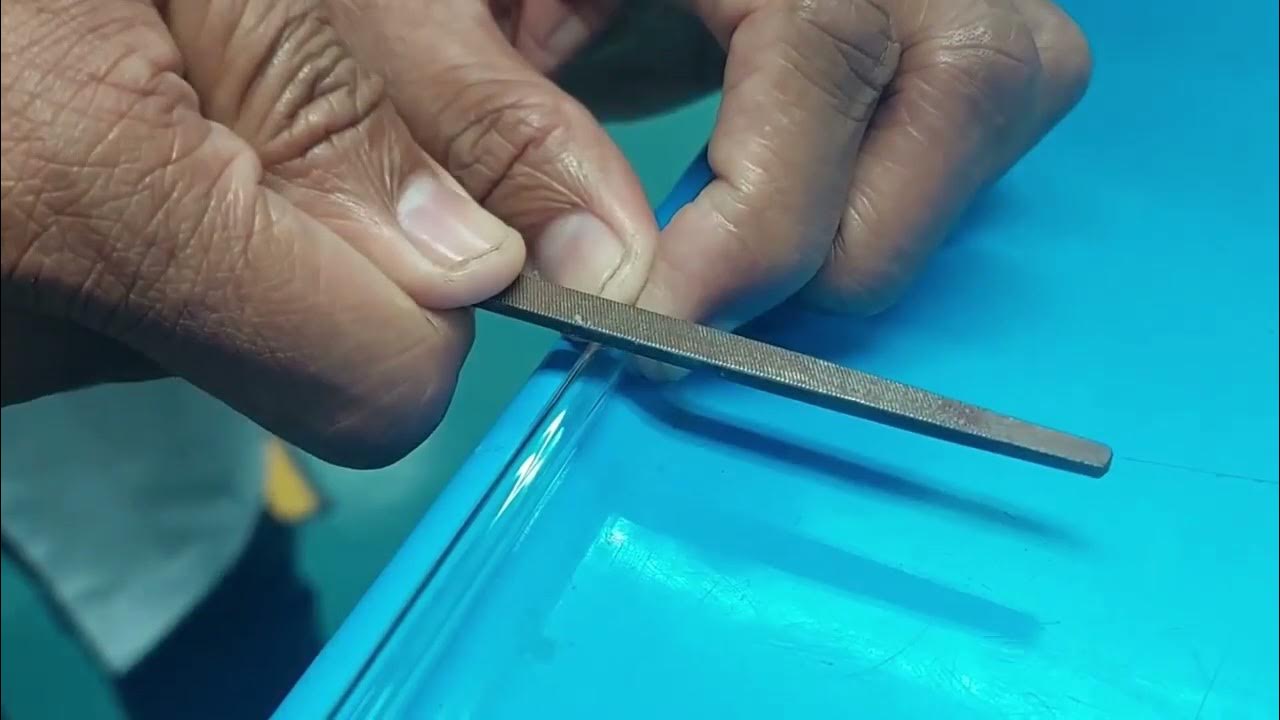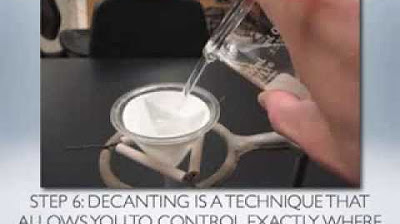Chemistry Lab: Manipulation Of Glass Tubing
Summary
TLDRThis video tutorial explains how to safely light and adjust a Bunsen burner, including manipulating glass tubing for laboratory use. It covers key steps such as checking gas control, adjusting the air intake for optimal flame, and ensuring safety. The tutorial also demonstrates how to properly heat and shape glass tubing by fire-polishing and bending it at 90 degrees. Safety tips like performing hose checks and cooling glass tubing are emphasized throughout. The video makes complex processes more accessible with a hands-on, step-by-step approach.
Takeaways
- 🔥 The Bunsen burner is used for heating materials in the laboratory by controlling the gas flow and air intake.
- 🔧 The needle valve stops gas from entering the burner until the gas control knob is loosened.
- 🔄 To adjust the flame, turn the gas control knob; 'Righty Tidy' closes the valve, 'Lefty Loosey' opens it.
- 💨 Adjusting the air intake controls the flame type; more air creates a 'whooshing flame of death,' and less air creates a luminous flame.
- ✔️ Safety checks include tugging the hose, ensuring the gas control knob is off, and adjusting the air hole before lighting the burner.
- 🔥 The nonluminous flame is efficient because it has a proper oxygen-to-fuel ratio and doesn’t produce glowing, unburnt fuel.
- ⚡ The hottest part of the flame is the light blue cone, used for high-temperature tasks.
- 🔧 Glass tubing can be cut and bent by scratching it with a file and using heat from the flame to manipulate it.
- 🔥 Fire polishing is used to smooth the rough edges of cut glass tubing by heating it evenly.
- 🧊 Cooling glass slowly after heating, called annealing, prevents it from cracking by allowing molecules to settle.
Q & A
What is a Bunsen burner and its primary use in the laboratory?
-A Bunsen burner is a laboratory device used for heating substances. It operates by mixing gas with air to create a flame, which can be adjusted for different heating needs.
How does the gas control knob work on a Bunsen burner?
-The gas control knob regulates the flow of gas. Turning it 'righty tighty' shuts off the gas, while 'lefty loosey' allows more gas to flow into the burner.
What is the function of the air intake in a Bunsen burner?
-The air intake allows air to mix with the gas before it burns. Adjusting the air intake changes the type of flame, from nonluminous (blue, hotter) to luminous (yellow, cooler).
What safety checks should be performed before lighting a Bunsen burner?
-1. Tug on the hose to ensure it is secure. 2. Make sure the gas control knob is off (righty tighty). 3. Ensure there is a small air hole open for gas to mix with air.
What is a 'nonluminous' flame, and why is it important?
-A nonluminous flame is a blue flame that burns with a proper mix of gas and air, producing no light. It's important for achieving complete combustion and is used for most heating tasks in the lab.
What is the 'whooing flame of death,' and when is it used?
-The 'whooing flame of death' refers to a flame with too much air, causing a loud sound. It is used to achieve high temperatures, especially at the tip of the inner blue cone, the hottest part of the flame.
How do you properly break glass tubing?
-To break glass tubing, make a deep scratch on the surface using a file, then apply force with your thumbs directly behind the scratch to snap it cleanly.
What is fire polishing, and why is it done?
-Fire polishing involves heating the rough edges of cut glass tubing in a flame until they are smooth and rounded. This prevents the glass from cracking and allows it to pass through rubber stoppers safely.
What is annealing in glass manipulation, and why is it important?
-Annealing involves slowly cooling heated glass in a cooler flame to allow the molecules to relax, preventing the glass from cracking due to internal stress after bending or cutting.
Why is it recommended to turn off the Bunsen burner from the gas source and not the burner itself?
-Turning off the burner from the source ensures that all gas burns out of the hose and burner, preventing gas from being trapped inside, which could be a safety hazard.
Outlines

Cette section est réservée aux utilisateurs payants. Améliorez votre compte pour accéder à cette section.
Améliorer maintenantMindmap

Cette section est réservée aux utilisateurs payants. Améliorez votre compte pour accéder à cette section.
Améliorer maintenantKeywords

Cette section est réservée aux utilisateurs payants. Améliorez votre compte pour accéder à cette section.
Améliorer maintenantHighlights

Cette section est réservée aux utilisateurs payants. Améliorez votre compte pour accéder à cette section.
Améliorer maintenantTranscripts

Cette section est réservée aux utilisateurs payants. Améliorez votre compte pour accéder à cette section.
Améliorer maintenant5.0 / 5 (0 votes)






